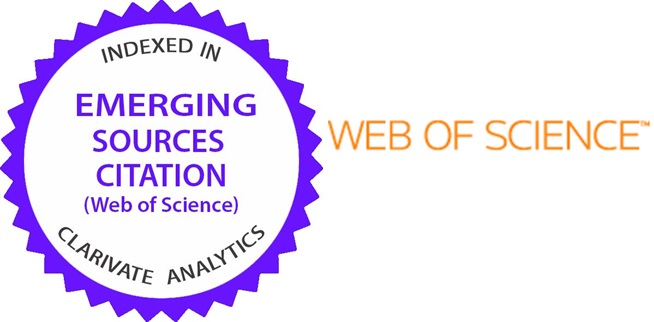Impact Analysis of Islamic Finance on Financial Inclusion and Economic Growth in Selected Muslim Countries: Lessons for Nigeria
DOI:
https://doi.org/10.31436/ijema.v26i2.512Keywords:
Economic growth, Financial inclusion, IBF, Nigeria, Simultaneous Equations ModelingAbstract
This study makes an impact analysis of Islamic Finance (IF) on economic growth and financial inclusion in selected Muslim countries, designated as the nine core markets of IF. This is in view of the prominence and enabling environment IF enjoys in the sampled countries. The core markets of investigation are: Saudi Arabia, Malaysia, UAE, Kuwait, Qatar, Turkey, Indonesia, Bahrain, and Pakistan. This study draws lessons from the experiences of the sampled countries on how Nigeria, with her enormous resources, can efficiently utilize Islamic Banking and Finance (IBF) for financial inclusion and economic growth. In this connection, the study adopts Simultaneous Equations Model (SEM) approach with panel data from 2011 to 2014. Basically, the major findings indicate that positive and significant impacts exist between IF and economic growth. Also, financial inclusion is positively impacted upon by IF but not significant. This study therefore recommends that governments of the sampled countries should continue to strengthen the growth of IF for more developmental opportunities and gains, especially for more inclusive economic growth. The Nigerian government should provide concrete supports to IBF operations through a robust institutional framework and enduring political backing. This is to also enable Nigeria benefit from IBF, especially in economic growth and financial inclusion, which are germane to economic growth and developmentof developing economies and the sampled countries, which are known as the nine core markets of IF.
References
Abdu, M., A. Jibir, S. Abdullahi, and A.A. Rabi’u, “Can Islamic Banking and Finance Spur Financial Inclusion? Evidence from Sub-Saharan Africa.†CBN Journal Applied Statistics 9, no. 1(2018): 77-104.
Abdullahi, S.I. “Islamic Banking in West African Sub-region: A Survey.†Arabian Journal of Business and Management Review (Oman Chapter) 2, no. 7(2013).
Abdullah, H., S. Maamor, and W.N. Mohamed Fisol, “Financing in Islamic Banking Scheme: Performance and Effect on Malaysian Output.â€Research Journal of Finance and Accounting 4, no. 4 (2013): 113–22.
Abdul-Rahman, A., and S. Mohd Nor, “Challenges of Profit and Loss Sharing Financing in Malaysian Islamic Banking.†Malaysian Journal of Society and Space 12, no. 2 (2016): 39–46.
Abdul Razak, A., F. Muhammad, M.Y. Mohd Hussin, Z. Zainol, and F.S. Abd Hadi, “The Role of Ar-Rahn in Enhancing Financial Inclusion: A Structural Equation Modeling Approach.†Jurnal Pengurusan 50, (2017): 97-109.
Adeola, H. “Islamic Finance: The Answer to Financial Inclusion in Nigeria.†A Presentation at EFInA Conference, 2009.
Aliyu, S.U.R., “Islamic Banking and Finance in Nigeria: Issues, Challenges and Opportunities.†International Institute of Islamic Banking and Finance MPRA Paper No. 42573. Online at https://mpra.ub.uni-muenchen.de/42 573/MPRA Paper No. 42573, November 2012.
Bank Negara Malaysia. “Enhancing Financial Inclusion through Islamic Finance.†Malaysia – World Islamic Finance Marketplace. (2015). www.mifc.com.
Bank Negara Malaysia. “Raising Financial Inclusion through Agents – Malaysia’s Experience.†Financial Inclusion Newsletter, no. 6 (2016).
Bushra, Y. “Foreign Capital Inflows and Growth in Pakistan: A Simultaneous Equation Model.†South Asia Economic Journal 6, no. 2 (2005): 207–19.
CBN. “Framework for the Regulation and Supervision of Institutions Offering Non-Interest Financial Services in Nigeria.†(2011). www.cbn.gov.ng
Central Intelligence Agency. “The World Factbook.†(2016). www.cia.gov/library/publication/the-world.
Desai, M.I.E. “Islamic Finance – Opportunities and Challenges.†Journal of Islamic Banking and Finance 33, no.1 (2016): 86 –90.
Furqani, H., and R. Mulyany, “Islamic Banking and Economic Growth: Empirical Evidence from Malaysia.†Journal of Economic Cooperation and Development 30, no. 2 (2009): 59 –74.
Gujarati, D.N., and D.C. Porter, Basics of Econometrics. 5th Edition. New York, McGraw-Hill/Irwin Companies, 2009.
Gyimah-Brempong, K. “Aid and Economic Growth in LDCs: Evidence from Sub-Saharan Africa.†The Review of Black Political Economy 20, no. 3 (1992): 31-52.
Hoggarth, D. “The Rise of Islamic Finance: Post-Colonial Market Building in Central Asia and Russia.†International Affairs 92, no. 1 (2016): 115–36.
Imam, P., and K. Kpodar, “Is Islamic Banking Good for Growth?â€IMF Working Paper – WP/15/81. International Monetary Fund, 2015.
Islamic Finance News. “IFN Deals for the Year 2013: Results.†(2014). www.islamicfinacenews.com.
Iqbal, Z., and A. Mirakhor, “Financial Inclusion: Islamic Finance Perspective.†Journal of Islamic Business and Management 2, no. 1 (2012): 35-64.
Johnson, K. “The Role of Islamic Banking in Economic Growth.â€CMC Senior Theses. Paper 642. Claremont Mckenna College, 2013. http://scholarship.claremont.edu/cmc_these/642
Mobolaji, H.I. “Interest and Non-Interest Banking: The Issues and the Controversies.†In General Studies in the Social Sciences: Some Fundamental Topics, edited by Babatunde Lateef Adeleke and Gafar Tunde Ijaiya, 23–35. Ilorin: General Studies Division, University of Ilorin, 2012.
Mohieldin, M., Z. Iqbal, A. Rostom, and X. Fu, “The Role of Islamic Finance in Enhancing Financial Inclusion in Organization of Islamic Cooperation (OIC) Countries.†Islamic Economic Studies 20, no. 2 (2012): 55–85.
Mohd Yusof, R., and M. Bahlous, “Islamic Banking and Economic Growth in GCC & East Asia Countries–A Panel Cointegration Analysis.†Journal of Islamic Accounting and Business Research 4, no. 2 (2013): 151-72.
Mustafa, D., and N.A. Abdul-Razak, “Islamic Development Bank, Foreign Aid and Economic Growth in Africa: A Simultaneous Equations Model Approach.†International Journal of Economics and Finance 4, no. 6 (2012): 94–107.
Mustafa, D. A., and H.I. Mobolaji, “AID-Growth Nexus Debates in Selected African Countries: A Methodological Exposition.†British Journal of Economics, Management & Trade 4, no. 5 (2014): 724–42.
______, and S.A. Solarin, “Growth and Development of Islamic Banking and Finance in Malaysia: Lessons for Nigeria.†Proceedings -1st International Conference of the International Institute of Islamic Banking and Finance (IIIBF). Kano: International Institute of Islamic Banking and Finance (IIIBF), (2015): 303–20.
Mustafa, D., and R.I. Adebayo, “The Operations of Islamic Banking and Finance in African Emerging Economies: Thematic Analysis.†Bayero International Journal of Islamic Finance 1, no. 2 (2015): 45-69.
Naceur, S.B., A. Barajas, and A. Massara, “Can Islamic Banking Increase Financial Inclusion?†IMF Working Paper-WP/15/31.(2015). International Monetary Fund.
Nawaz, T. “Lifting the Lid on Financial Inclusion: Evidence from Emerging Economies.†International Journal of Financial Studies 6, no. 59 (2018): 1-8.
Nazar, M. “Financial Inclusion through Islamic Banking.†IRA – International Journal of Management and Social Sciences 6, no. 2 (2017): 324-31.
Okte, M.K.S. “The Role of Islamic Finance in Shaping the New Financial Order.†International Journal of Business and Social Science 7, no. 2 (2016): 229–37.
Sadr, K. “Gharzul-Hasaneh Financing and Institutions.†In Islamic Finance for Micro and Medium Enterprises, edited by Mohammed Obaidullah and Hajah Salma, Haji Abdul Latif, 105–13. Jeddah: Islamic Research and Training Institute (IRTI), 2011.
Sanusi, S.L. “Nigeria’s High Poverty Level.†(2011). http://www. dailytrust.dailytrust.com/index.
Tahir, I.M., and Abu Bakar, N.M. “Islamic Banking Operations: Preparing the Fit for Internationalization.†Journal of Islamic Economics, Banking and Finance 5, no. 3 (2009): 49–62.
Umar, B.A. “Islamic Finance in Nigeria: Issues and Challenges.†New Nigerian, (2011, January).
Wooldridge, J.M. Introductory Econometrics: A Modern Approach. 4th Edition. South-Western Cengage Learning, 2009.
World Islamic Banking Competitiveness Report. “New Realities, New Opportunities.†EYGM Limited, 2016.
World Bank. “World Development Indicators - Nigeria.†(2018). www.worldbank.org








